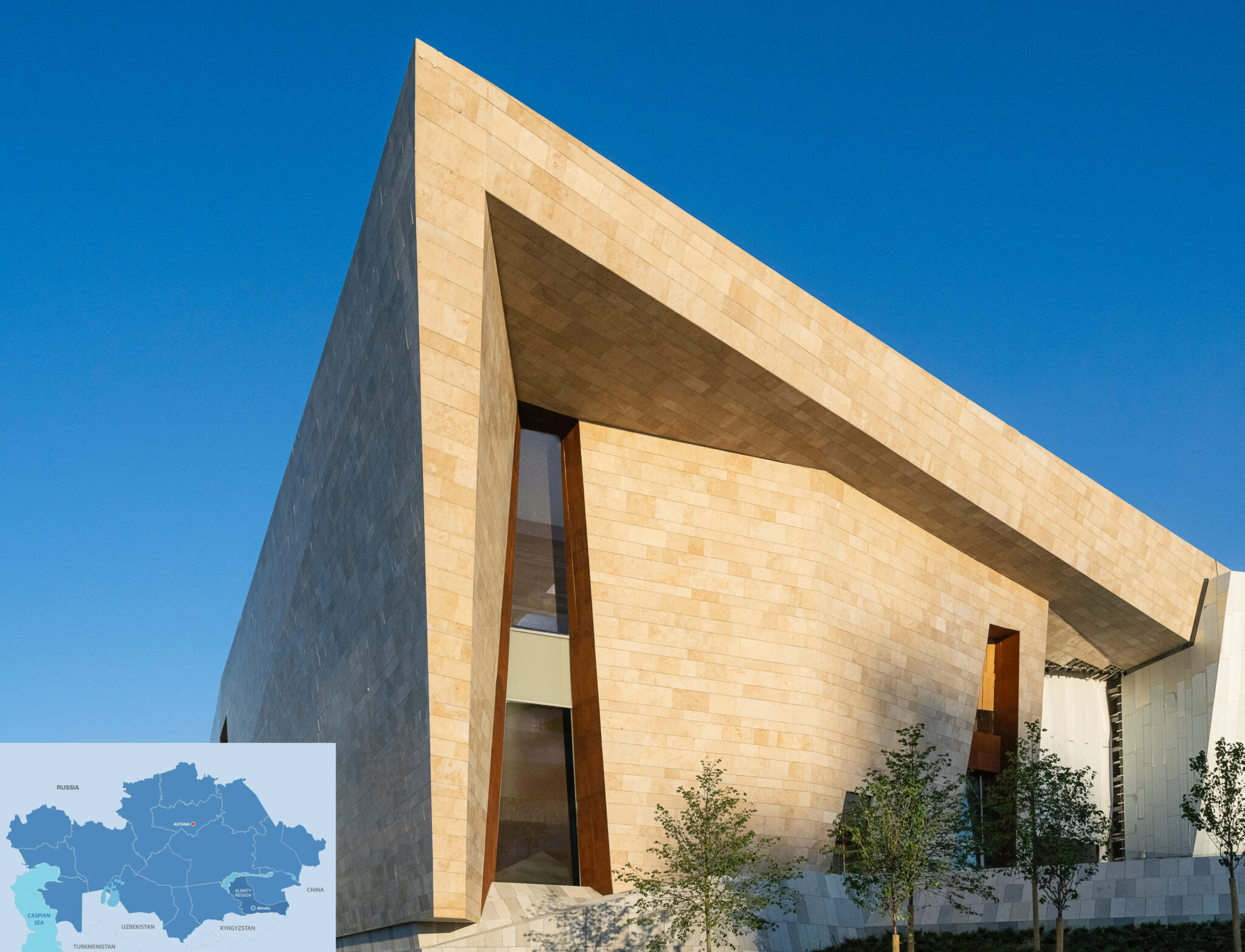ASTANA ( WNAM MONITORING ): The Almaty Museum of Arts will open Sept.12 as Kazakhstan’s first museum built to international standards and capable of hosting major global exhibitions. The institution is expected to play a central role in Almaty’s cultural infrastructure, attracting tourists and art enthusiasts from around the world.
In an interview with The Astana Times, Meruert Kaliyeva, the museum’s artistic director, highlighted the museum’s unique role, upcoming projects and broader vision for the region.
“This is the first museum of contemporary art of such scale in Kazakhstan. It combines works by the country’s leading artists with internationally recognized masters of contemporary art, creating a dialogue between the local and the global,” Kaliyeva said.
A cultural platform at the crossroads of Eurasia
Kaliyeva said the museum’s mission is twofold: to study, preserve and showcase Central Asian art, and to introduce Kazakh audiences to world art.
She described the space as a “living cultural platform,” with plans for exhibitions, lectures, concerts, film screenings, educational programs and workshops for children and adults.
Designed by British firm Chapman Taylor with engineering support from Buro Happold, the museum meets the highest international standards. It features climate control, modern storage facilities, expansive galleries, and specialized art-handling spaces, including wet and dry workshops and a quarantine room.
“The museum reflects global best practices in everything – from architecture and engineering to research and exhibition programs,” Kaliyeva said.
The path to completion was not without obstacles. Kaliyeva noted that many aspects of the project were new to both the team and the country.
“From engineering and logistics to the production and installation of complex works of art, the process demanded entirely new approaches. Building a project of this scale is never easy. But when you see the artworks installed and the audience’s reaction, it is incredibly inspiring,” she said.
She emphasized that the museum’s research activities will reflect its unique position at the crossroads of Eurasia, connecting local culture to global processes.
To help audiences connect with the art, the museum will employ a team of mediators to explain the stories and ideas behind the works. Audio guides will be available both on-site and online.
“We want to prioritize the direct perception of art and live experience, which is why we are not planning to introduce VR [virtual reality] or AR [augmented reality] technologies. In the future, we may integrate them as tools to recreate historical context,” said Kaliyeva.
Global collaborations
In the summer, the museum introduced landmark works to Almaty. In July, Spanish artist Jaume Plensa unveiled Nades, a 12-meter sculpture created specifically for the museum. Known for monumental installations from Chicago to Tokyo, Plensa designed the piece as a symbol of contemplation, depicting a young girl with closed eyes and braided hair, referencing Kazakh traditions.
“Working with Plensa was a very important step for us. His sculpture, placed at one of the city’s busiest intersections, combines a universal image with Kazakhstan’s cultural codes. We wanted the museum’s opening centerpiece to spark public interest and judging by the public response, it has fulfilled this role brilliantly,” said Kaliyeva.
On Aug. 22, another work was added in front of the museum entrance, a sail-like sculpture by British-Nigerian artist Yinka Shonibare, symbolizing freedom and cultural exchange.
According to Kaliyeva, the museum is also preparing to host major international events. On Oct. 3–4, it will open with “History in Actions and Gestures: Performance, Central Asia, and the Caucasus,” a program of discussions and performances organized with London’s Tate Modern.
“In November, a three-year collaboration with New York University will begin, supported by a Getty Connecting Art Histories grant. The program will host art history seminars across Almaty, Bishkek and London, with the Almaty Museum of Arts serving as the first venue,” she said.
Next year, the museum will also stage a major joint exhibition with a leading international institution. Details remain undisclosed.
Kaliyeva expressed confidence that the museum will become an important platform for contemporary art in Kazakhstan and Central Asia.
“On one hand, it gives regional artists the chance to present their work in a professional international context. On the other hand, it provides audiences with access to the finest examples of world art,” said Kaliyeva.
“However, the museum’s mission goes further. It is a place for community building and lifelong learning. It enriches cultural life and helps people see the world from a new perspective,” she added.


